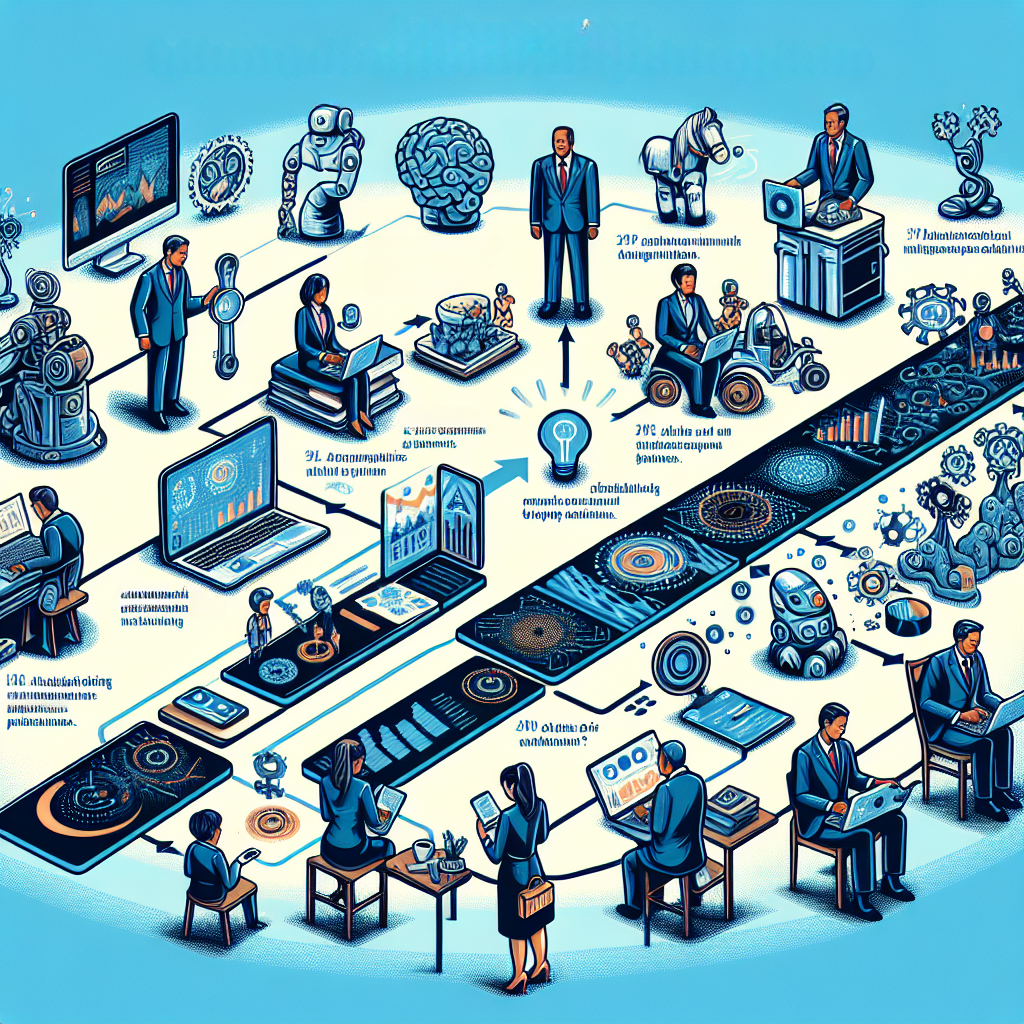In today’s competitive world, it is change or die. Those enterprises that cling to yesterday’s ways lose ground to the enterprises that can adapt and compete in a changing world. But adapting and competing in a changing world is not an easy feat! Many companies have failed in their efforts, some disastrously so. Adaptation and change require agility and agility is hard to achieve in a large enterprise.
The large, well-known consulting houses all agree that agility is a desirable characteristic of an enterprise. Implementing practices that result in successful agile enterprises, however, is a much less certain undertaking. In his writings on innovation, Clayton Christensen points out that few large enterprises remain competitive over time, largely as a result of their inability to change. While management may be very committed to change, the middle layers of large enterprises react to change negatively and suppress practices that enable change.
What does it take to overcome the organizational inertia that instinctively opposes change? Change must be a way of life, not a temporary state. But change must also be controlled. Otherwise, organizational integrity deteriorates and an enterprise may fracture into divided camps. Examples of business enterprises that have successfully internalized change are actually fairly rare. But there are very large enterprises where change is an everyday fact of life—the modern US armed forces.
The US military is, of course, not a commercial enterprise in the same way that a business is. However, it has a set of principles that enable agility from top to bottom, a set of principles that business can directly apply.
Commitment to information
The first principle is the overriding value of information. To be clear, information is not merely data—it is that part of the data that is relevant to the decisions that must be made. The quality and timeliness of decisions depends directly on the quality and timeliness of information. The rapid analysis and flow of information, both up and down the levels of an enterprise, is a key enabler of agility. The commitment to information quality encompasses the commitment to analytical transparency, continuous process improvement and cybersecurity. The commitment to timeliness drives information architecture, resources and organizational responsibilities.
The information content itself is dynamically changing as the environment and the decisions change. The commitment to the value of information addresses more than the flow of “routine” information. It also requires that the specific information needed by specific dynamic decisions is delivered with quality and timeliness to support the decisions.
Commitment to mission goals
The second principle that enables agility is the top-to-bottom commitment to mission-level goals. At first thought, this seems to contradict the idea of agility. To understand this principle, it is important to distinguish between goals and the plans for achieving them. This distinction is clear if goals are defined as desired end states or outcomes, while plans are the possible processes for achieving the end state. In the agile organization, goals set by higher levels of the organization are honored, but the choice of plans to achieve the stated goals is held at the next lower level. This preserves freedom of action at lower levels while maintaining the commitment to mission goals.
Freedom of action without focus on mission goals leads to the breakdown of organizational integrity. A key aspect of the commitment to mission goals is the transparency of planning. This transparency is implemented in two ways: acceptable practices and plan auditing. For the US armed forces, the role of acceptable practices is very clear. The entire process of development, validation, documentation and training of accepted practices is formally defined, assigned to specialty units and funded on a continuing basis. Businesses often fail to recognize the value of their practice knowledge and consequently fail to systematically protect, evaluate and extend it.
Plan auditing assures that all plans of action are both acceptable practices and directly related to the mission goals of the enterprise. By providing plan auditing in a transparent way, the enterprise can detect unproductive activities and avoid internal conflicts that result from ineffective communications about operational plans.
Commitment to speed
However fast the world was changing yesterday, it will be even faster in the future. The commitment to speed drives the enterprise to higher and higher levels of agility. Achieving speed cannot be at the cost of the other principles—the commitments to information and to mission goals must be upheld at faster and faster speeds. Information analysis and distribution cannot lose quality in order to achieve speed; planning cannot lose transparency or abandon accepted practices to achieve speed.
Speed along with quality and reliable, effective action is the heart of competitive advantage. It is speed that allows the enterprise to out-think and out-perform its competitors. Speed translates into faster product cycles, faster analysis of trends, faster response to the situation and consideration of a much larger set of options.
Commitment to human responsibility
Wherever the stakes are high, humans must be accountable. In a world of computers, information and automation, deliberate effort must be focused on the need for human responsibility. The humans in the enterprise must be equipped to understand the situation, evaluate and approve operational plans and actions and manage goals and outcomes. Yet at the same time, the humans cannot impede the speed of the enterprise.
Human responsibility is not simply a user interface problem that can be addressed through colorful charts and summary data. Instead, the human decision maker must understand the information, goals and plans in enough depth to actually accept responsibility for the course of action being taken.
The Intelligent Enterprise
The four principles—information, mission goals, speed and human responsibility—are challenging to implement without an enterprise-wide view. For the US armed forces, there has been a long commitment to the creation and refinement of integrated mission command systems. These systems are not limited to the collection and analysis of information but also extend to mission goals, planning and execution. Each generation of mission command systems has been faster and more comprehensive than before. The growth in scope of these mission command systems has led to the term “systems of systems” because a key aspect of these systems is the ability to integrate existing smaller systems into their architecture.
The phrase Intelligent Enterprise defines the view that business enterprises can be agile and effective in a changing world by adopting the agile principles of information, mission goals, speed and human responsibility in an integrated enterprise architecture. The Intelligent Enterprise does not abandon existing information systems within the enterprise, but instead brings them under the same set of agile principles by treating them as subsystems of a larger integrating layer.
The main aspects of the Intelligent Enterprise are
- Distributed data architecture. The data architecture replaces the idea of a central data warehouse with a distributed set of data stores that are connected by a high speed “information bus” to support data movement.
- Local purpose-oriented data stores. The direct clients of the distributed data architecture are smaller, purpose built data stores that support clusters of related applications. The purpose-oriented data stores are not simply copies of data from the distributed stores and may add data characterizations and data transformations as services to support the applications that use them.
- Purpose-built applications. This layer of the Intelligent Enterprise provides for the execution of small accepted practices that map to low-level alternative plans for achieving functional goals. An application may obtain data from more than one local data store. In the Intelligent Enterprise, each functional area of the enterprise may have many applications available for their use, with only a few of them that are relevant at any given moment.
- Intelligent orchestration. This layer provides the situation assessment, mission goals and transparent planning layer for the enterprise. As information is collected and analyzed by purpose built applications, its importance and meaning to the enterprise are interpreted. Mission goals are defined in this layer and assigned to the functional units of the enterprise, who in turn select, refine and approve plans that implement accepted practices for pursuit of the goals. The approved plans result in the execution of the applications that perform the desired accepted practices and return data to the local data stores. The relationships between goals, plans and the purpose built applications that implement each plan is defined by a configuration table.
- User interfaces. Each user functional area is supported by a browser-based user interface with access to information relevant to the user’s functions, goal information, planning and execution status and notices of events of interest to the user. Information to support the user interfaces comes from the local purpose-oriented data stores and the orchestration layer.
Implementing change in the Intelligent Enterprise
The goal of the Intelligent Enterprise is to enable change as a way of life. To meet this challenge, the Intelligent Enterprise supports change at two levels—change in operations and change in its own capabilities.
Changes in operations are implemented by the intelligent orchestration layer of the Intelligent Enterprise. When incoming information is interpreted, it may require modification of mission goals or a change in plan to apply a different tactical approach. The orchestration layer allows the needed goal changes to be quickly identified and the new goals distributed to the affected functional areas of the enterprise. New plans based on previously validated accepted practices are reviewed and selected at the functional level, causing different purpose built applications to begin executing. The need for an operational change can be identified and implemented within minutes in quickly changing situations.
The Intelligent Enterprise allows rapid and non-disruptive change to its own capabilities by its modularity and its transparency. Data changes are bounded by the distributed data architecture and the local purpose-oriented data stores. The purpose built applications can be changed individually, as new or enhanced accepted practices are developed and validated. The intelligent orchestration layer is changed by updating the configuration tables that define the relationships between the accepted goals, plans and purpose built applications.
The four principles of agility do not come for free. While the Intelligent Enterprise enables change, the enterprise itself must also continue to manage change in its data and its practices. Winning as an Intelligent Enterprise will also require these additional functional efforts:
- Data hygiene. The data in the environment is always changing. The Intelligent Enterprise supports data change, but the data must be documented and validated as a part of its introduction into the architecture.
- Accepted practices. The root of change is the need to update and extend accepted practices as the external business environment changes. While the Intelligent Enterprise allows rapid deployment and use of accepted practices, the development and validation of accepted practices should be an ongoing effort within the enterprise.
Lasting competitive advantage is achieved by enterprises who are disciplined change agents. The Intelligent Enterprise provides the framework for change as a way of life.



